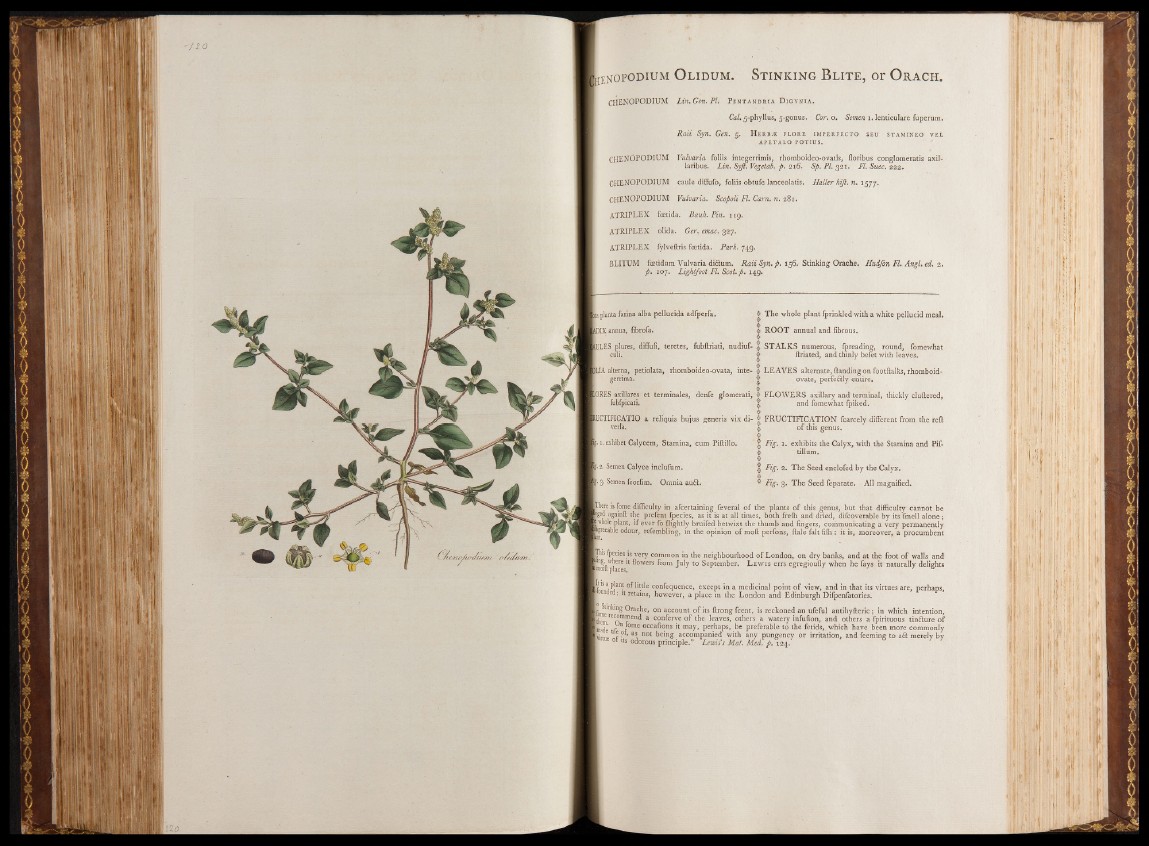
|taplanta farina alba pellucida adfperfa.
IDIX annua, fibrofa.
1 JLES plures, diffufi, teretes, fubftriati, nudiuf- ]
culi. *
ILIA altema, petiolata, rhomboideo-ovata, inte- i
gerriina. . . <
|0RES axillares et terminales, denfe glomerati, \
fubfpicati.
jUCTIFICATIO a reliquis hujus generis vix di- '
verfa.
l. exhibet CalyCem, Stamina, cum Piftillo.
fe. 2. Semen Calyce inclufum.
1 3* Semen feorfim. Omnia auft.
* The whole plant fprinkled with a white pellucid meal.
> RO OT annual and fibrous.
, STA LK S numerous, fpreading, round, fomewhat
> . ftriated, and thinly belet with leaves.
> LEAVES alternate, (landing on footftalks, rhomboidovate,
perfectly entire.
> FLOWERS axillary and terminal, thickly cluttered,
and fomewhat fpiked.
: FRUCTIFICATION fcarcely different from the reft
i o f this genus.
I Fig. l. exhibits the Calyx, with the Stamina and P it
> tillum.
^ Fig. 2. The Seed enclofed by the Calyx.
s Fig. 3. The Seed feparate. All magnified.
fhere is fome difficulty in afcertaining feveral of the plants o f this genus, but that difficulty cannot be
Jged againft the prefent fpecies, as it is at all times, both frefh and dried, difcoverable by its fmell alone;
Iwnole plant, if ever fo flightly bruifed betwixt the thumb and fingers, communicating a very permanently
Igreeable' odour, refembling, in the opinion of moft perfons, ftale fait fifh : it is, moreover, a procumbent
IThis fpecies is very common in the neighbourhood of London, on dry banks, and at the foot of walls and
» 11 flowers from July to September. L ewis errs egregioufly when he fays it naturally delights
!i ^jan-t confequence> except in a medicinal point o f view, and in that its virtues are, perhaps,
j un ed; it retains, however, a place in the London and Edinburgh Difpenfatories.
S « . , ; -
«unking on account of its ftrong fcent, is reckoned an ufeful antihyfteric; in which intention,
pem rT ? end a conferYe ° f tAe leaves, others a watery infufion, and others a fpirituous tin&ure of
pade iif f 0me ooeafiqns it may, perhaps, be preferable to the fetids, which have been more commonly
Ivirtiin r • as, not being accompanied with any pungency or irritation, and feeming to a6t merely by
ffirtue of its odorous principle.” Lewis’s Mat. Med. fi. 124.